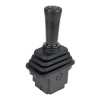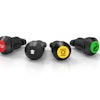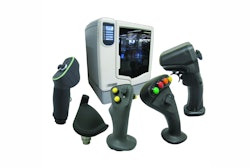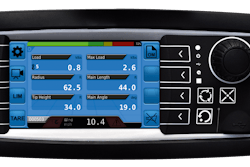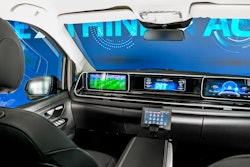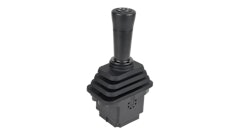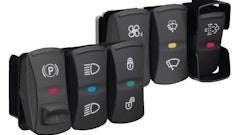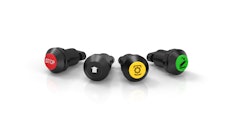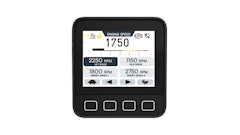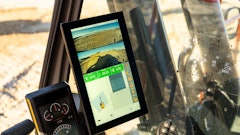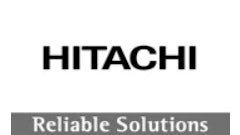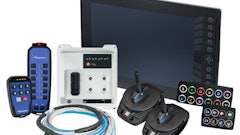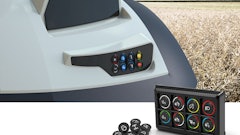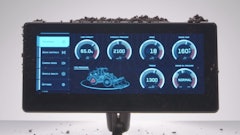
The conventional steering wheel is more often being replaced with new steering methods across the commercial vehicles industry. OEMs and end-users are opting for the new methods under the perception that it’s a more comfortable experience. And while the perception of improved ergonomic benefits is pervasive, the team at Danfoss Power Solutions was having a hard time uncovering any studies that proved that theory with conclusive, hard data.
“When we would discuss different steering solutions with a customer for their machine, the conversation was very much driven by the current trend,” says Thomas Langer, senior systems engineer at Danfoss Power Solutions. “Instead, we wanted to be able to prove whether or not a solution was more ergonomic — and if so, we wanted to measure the exact impact.”
In short, the team at Danfoss wanted to bring real data to customer conversations and help guide OEM partners with facts about what would exactly improve operator productivity.
Finding the answers
To acquire this information, Danfoss Power Solutions partnered with the sports technology department at Aalborg University in Denmark. Together, they conducted a study to discover the effectiveness and potential muscle strain of different steering solutions.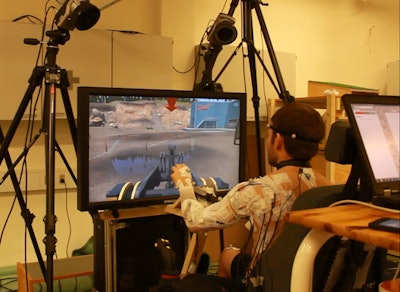 A student being monitored as he uses a simulator to operate a wheel loader with different steering input devices.
A student being monitored as he uses a simulator to operate a wheel loader with different steering input devices.
Fifteen healthy, right-handed male students were monitored as they used a simulator to operate a wheel loader with different steering input devices — including a standard steering wheel, a steering wheel enabled with the Quick Steering feature from Danfoss, a mini-wheel and Danfoss joysticks — to complete a specific task. The team measured completion time, task deviation and muscle activity of the hand, arm and shoulder.
“We decided to use subjects who hadn’t operated this type of vehicle before,” Langer explains. As construction and off-highway industries continue to struggle finding skilled labor, testing with novice operators best represents the future workforce. “Plus, if we used skilled operators, they would have come into the study with established preferences, potentially altering our results.”
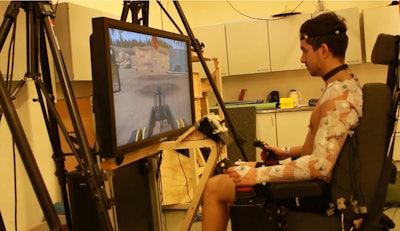 Data measured included completion time, task deviation and muscle activity of the hand, arm and shoulder.
Data measured included completion time, task deviation and muscle activity of the hand, arm and shoulder.
Which trend rises to the top?
After analyzing their results, Danfoss and Aalborg University found that recent steering trends may be around for the long-term. Not only did the team discover that new steering methods are, in fact, more ergonomic, but also more productive.
Using any of the alternative steering inputs resulted in a 6% decrease in task completion time compared to a traditional steering wheel — which, when taken into account over the lifetime of a machine, considerably impacts the return of investment. Operators can get more done in a typical work day and get it done faster.
The most significant results occurred when participants used a joystick steering method. When compared to conventional steering, using a Danfoss JS-1 joystick reduced the user’s average workload by 65%. This is the lowest muscle activity for any steering input.
“Considering the shoulder — this kind of difference in muscle activity is like raising your arm and trying to keep it parallel to the ground for a whole day versus utilizing an arm rest instead,” says Langer. “A 65% difference means there’s potential for a significant improvement in muscle fatigue.”
The future of steering
With these findings, OEMs can integrate new steering solutions into their machines knowing that they won’t have to sacrifice operator comfort for productivity, or vice versa.
“Findings like this give our OEM partners tangible value props to pass along to their customers,” says Langer. “These steering solutions can give them a competitive edge, providing one more way to further increase productivity and improve user experience.”
Joystick steering solutions will reduce the overall operator workload, ensuring a safer and more ergonomic work environment. In the long run, this will have positive effects on a user’s health, reducing muscle fatigue and mobility issues.
While it’s common for OEMs, by using the Danfoss OSPE steering unit, to integrate both standard and joystick steering options on a machine (to give the operator a choice depending on preference or task), Langer sees the industry moving more toward joystick-only steering designs. Danfoss will continue to raise the bar and use the findings from this study when evaluating future steering solutions.
“The trend is already there — now we have the hard data to back it up,” says Langer.
OEM Off-Highway covered the growing joystick steering technology trend back in the September 2014 issue. Read the cover story, Generation G: Gamers in the Operator Seat.

